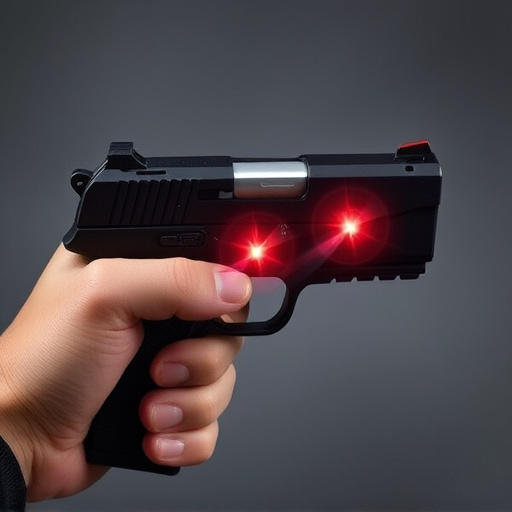The Triad stun gun, a revolutionary self-defense tool, prioritizes user safety through its innovative design and advanced features like double-tap triggers, intelligent sensors, and temperature monitoring. Accidental discharges pose significant risks due to user error, environmental factors, or mechanical failures. Mitigate these dangers by storing the device securely yet accessible, undergoing regular training, inspecting for damage, and using original packaging. Adhering to these best practices ensures the Triad stun gun remains a reliable and safe choice for personal protection.
Accidental discharge of stun guns can lead to severe consequences, making it crucial to understand their operation and implement preventive measures. This article delves into the causes and risks associated with accidental discharges, exploring the role of the Triad Stun Gun as a reliable tool for minimizing unintentional activation. We also discuss best practices for safe handling and storage, providing essential guidelines to reduce discharge incidents. By adhering to these practices, users can ensure the secure and effective use of stun guns.
- Understanding Accidental Discharge: Causes and Risks
- The Role of the Triad Stun Gun in Preventing Unintentional Activation
- Best Practices for Safe Handling and Storage to Minimize Discharge Incidents
Understanding Accidental Discharge: Causes and Risks
Accidental discharge, especially with compact and powerful tools like the Triad stun gun, poses significant risks due to various causes. User error is a leading factor, where unintentional activation occurs during handling or storage. This can be attributed to factors such as lack of training, improper use, or even accidental pressure on the trigger mechanism. Environmental conditions also play a role; extreme temperatures and wet or slippery surfaces can increase the likelihood of accidental discharge.
Another cause is mechanical failure or defects in the device’s design. Manufacturing imperfections, loose connections, or worn-out parts can lead to unexpected activation. It’s crucial for users to inspect their stun guns regularly for any signs of damage or malfunction. Additionally, keeping such devices out of reach of children and unsecured in bags or holsters is essential to mitigate risks associated with accidental discharge.
The Role of the Triad Stun Gun in Preventing Unintentional Activation
The Triad Stun Gun stands out as a significant advancement in accidental discharge prevention mechanisms. Its unique design incorporates three key features that work synergistically to minimize the risk of unintentional activation. First, the gun features a specialized trigger mechanism that requires a precise double-tap motion, significantly reducing the likelihood of accidental discharges. Additionally, it employs an intelligent sensor system that detects body movement and triggers only when the stun gun is in active contact with a target, preventing unwanted shocks.
Further enhancing its safety profile, the Triad Stun Gun integrates a smart circuit board that monitors voltage levels and temperature, automatically disabling the device if it detects overvoltage or overheating conditions. This multi-layered approach to prevention ensures that users can rely on the stun gun for protection without worrying about accidental activation, making it an indispensable tool for personal safety enthusiasts and law enforcement alike.
Best Practices for Safe Handling and Storage to Minimize Discharge Incidents
To minimize accidental discharge incidents, especially with devices like the triad stun gun, adhering to best practices for safe handling and storage is paramount. Users should always treat the weapon with respect and caution, ensuring it’s kept in a secure, designated location away from children and unauthorized individuals. Regular training on proper usage, including understanding the device’s safety features and activation mechanisms, is crucial. Additionally, maintaining the stun gun in its original packaging or a custom-fitted case can help prevent accidental triggers during storage.
Furthermore, keeping the device in an easily accessible yet secure place, such as within a locked drawer or safe, ensures it remains under control while still being readily available when needed. It’s also important to regularly inspect the stun gun for any signs of damage or malfunction and promptly replace or repair it if necessary. By following these best practices, users can significantly reduce the risk of accidental discharge incidents involving powerful tools like the triad stun gun.
Accidental discharge of stun devices can be significantly reduced by understanding their mechanisms, proper handling, and utilizing tools like the Triad Stun Gun. By adhering to best practices for storage and deployment, users can minimize risks associated with unintentional activation. The Triad Stun Gun’s innovative design plays a crucial role in preventing accidental discharges, offering a safer alternative for personal protection. Armed with this knowledge, individuals can confidently navigate situations while ensuring their safety and the well-being of others.
